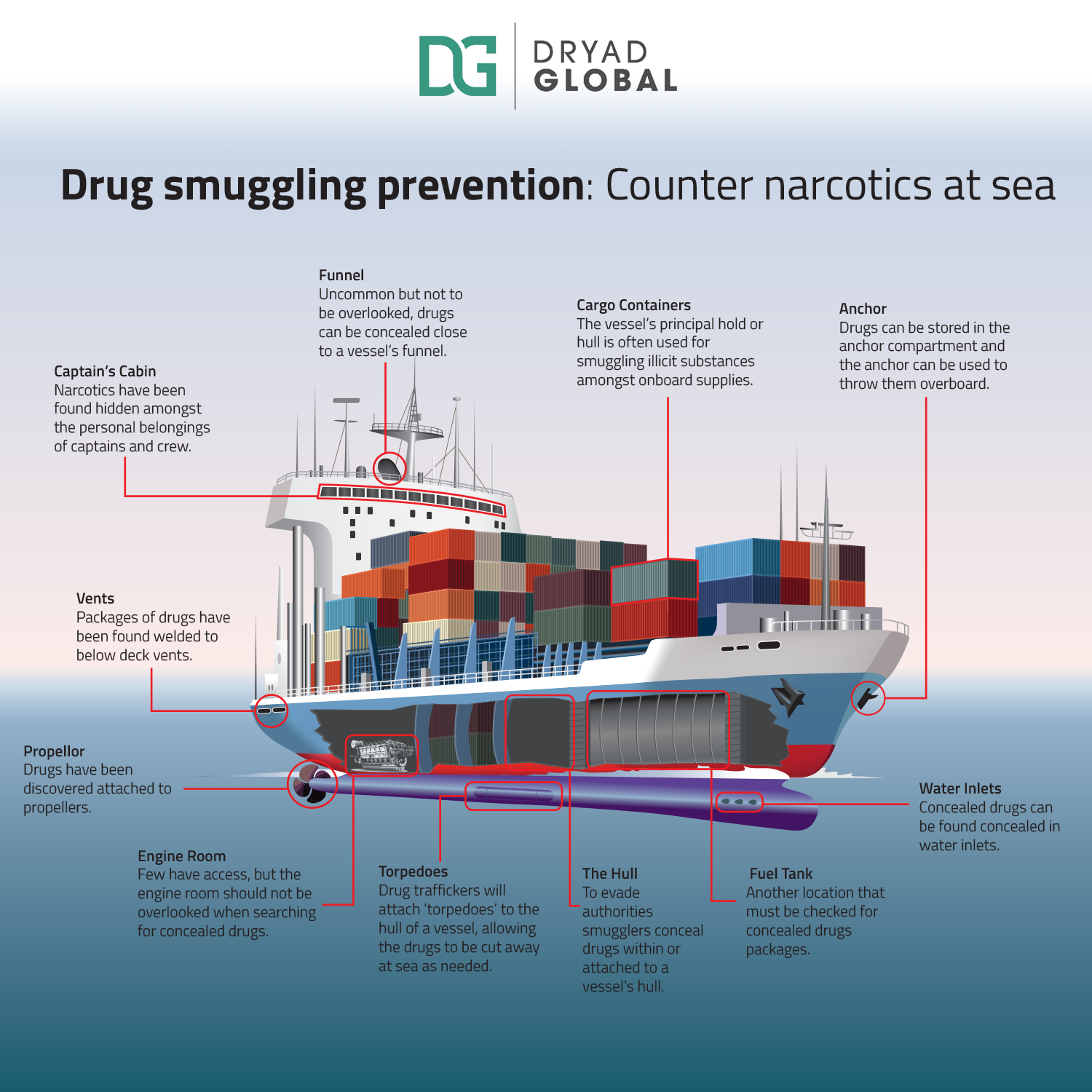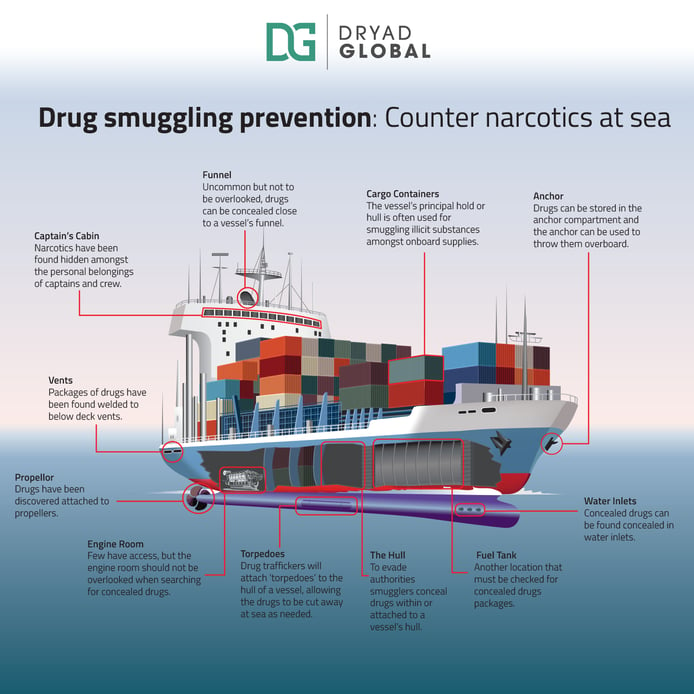Police in Brazil have broken up a smuggling ring that had a curious modus operandi. For years, its divers strapped cocaine to the hulls of cargo ships departing for Europe, an increasingly popular technique that often happens unbeknownst to the crew.
More than 200 kilograms of cocaine were seized and a dozen people arrested during a massive police operation in Rio de Janeiro and Espírito Santo, home to the port of Vitória, authorities said in a news release.
During a two-year investigation, police discovered that the traffickers transported bricks of cocaine from Rio to the neighboring state of Espírito Santo. The cocaine was then loaded onto small fishing boats that steered near cargo ships anchored in the port of Vitória. Divers then concealed the drugs in their hulls below the waterline, attaching the cocaine to the rudder compartment. Once the ships docked near the Port of Rotterdam, divers retrieved the cocaine.
Download our Counter Narcotics Report 2021
The underwater drug smuggling scheme had likely been going on for years. Besides the dozen arrests, police seized 14 luxury vehicles and confiscated $158,719 (827,000 Brazilian Reals). Six mansions located in the Mangaratiba municipality of Rio de Janeiro and the Guarapari municipality in Espírito Santo state were also seized.
While investigators are still looking into the ships that brought the drugs from Brazil to the Netherlands, it is highly suspected that the crew of the cargo ships were unaware of their participation in the international drug trade.
A similar drug trafficking ring was also busted this week in Colombia. A gang, known as the Troya, soldered metal tubes to ships in the Barranquilla, Cartagena and Santa Marta ports that contained cocaine. Using this technique, the drug trafficking organization delivered over 20 tons of cocaine to Central America and the United States in two years.
InSight Crime Analysis
Traffickers are using every tactic in the playbook to hitch a ride on cargo ships heading to Europe, concealing it inside containers and attaching it to the ships themselves, all of which makes the job of law enforcement more dangerous and difficult.
While the use of divers to strap cocaine to the hulls of ships is not a new smuggling method -- French frogmenwere nabbedin 2013 -- regional reports suggest the tactic is on the rise. A Colombian drug trafficking organization recently hired divers in Peru to weld packages of cocaine inside the vents of ships docked in the Pisco and Chimbote ports in an effort to evade law enforcement authorities searching for cocaine onboard.
Other diver dependant smuggling methods include torpedoes filled with cocaine bolted or tied onto the ship's hull. Cavities below the waterline, such as water inlets in the stern and the propeller compartment, have also been used to hide cocaine.
Maritime drug smugglers also count on corrupt crew members and authorities to stow cocaine on cargo ships.
The engine room is a popular hiding spot since the area is typically restricted to select personnel. The captain's cabin has also been used.
The favored method, though, continues to be to conceal drugs within maritime cargo containers. Tactics and the ports targeted are constantly changing. As a result, authorities at Dutch, Belgian and German ports have recently made record cocaine seizures.
Source: InSight Crime






